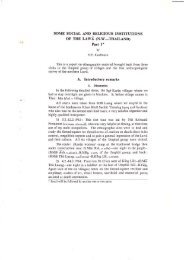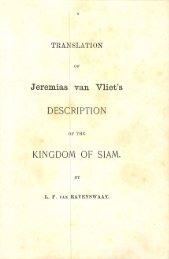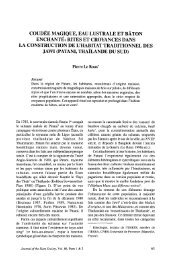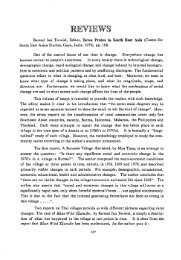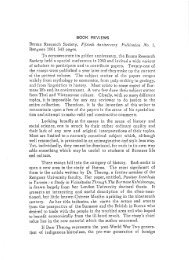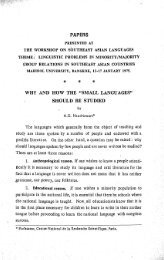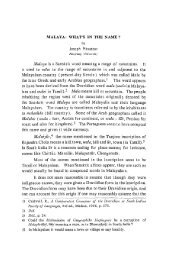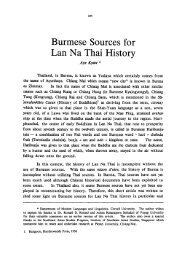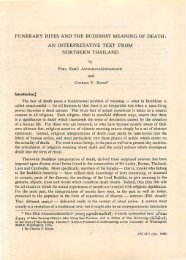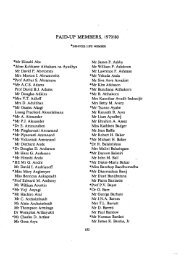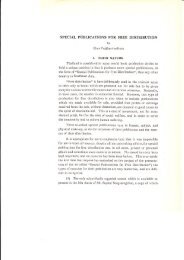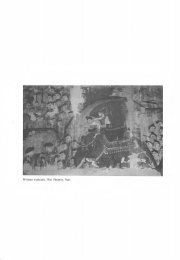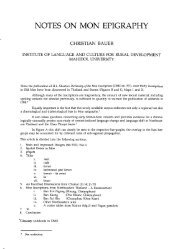A COMPARATIVE STUDY OF THE SANSKRIT, TAMIL, THAI AND ...
A COMPARATIVE STUDY OF THE SANSKRIT, TAMIL, THAI AND ...
A COMPARATIVE STUDY OF THE SANSKRIT, TAMIL, THAI AND ...
You also want an ePaper? Increase the reach of your titles
YUMPU automatically turns print PDFs into web optimized ePapers that Google loves.
184<br />
S. Singaravelu<br />
be displayed in the composition of these works. In other words,<br />
though there may be numerous similar elements diffused among several<br />
versions, one cannot argue that the works possessing the same<br />
or similar motifs are the same, for the combination of motifs and<br />
incidents may indeed take almost any form. Even if the same plot and<br />
motifs are used in two given literary works we may still be able to<br />
observe and appreciate the original qualities of combination of those<br />
elements in different guises. Various motifs may appear in various<br />
combinations and these may undergo kaleidoscopic change. The<br />
incidents or motifs would be the bits of coloured gems; shaken, they<br />
would fall into a variety of attractive forms.<br />
There is also another feature of diffusion and acculturation<br />
which is worthy of note. Though incidents or motzfs of the<br />
common store may be interwoven in any form, at the same time<br />
certain forms or combinations may in the course of time gain<br />
currency as the fittest, and these may be retained and more widely<br />
spread than the others. In other words, some form of the motifs<br />
may be judged by the skilled narrators or composers as the fittest,<br />
and they would survive. The story-tellers are known to have always<br />
been making varied combinations, the best and the most dramatic of<br />
which often survive: a good type of motif, once bit upon, is diffused<br />
widely, though we cannot be so fortunate as to be aware of the name<br />
and home of the combiner or the date of the combination.<br />
Again, with all the many variations to be found in several<br />
versions of a popular tale, it is remarkable that the tale should retain a<br />
definite enough quality to be considered a real entity. This is perhaps<br />
because the characteristic incidents or motifs of the story, though<br />
varied, are still so constant that it is not difficult to recognise their<br />
type in spite of the almost kaleidoscopic variations they have<br />
assumed. It is also of interest to note that the variations deal with<br />
materials handled in different fashion; sometimes appearing as part<br />
of local environment, legend, and traditions, and at other times<br />
receiving local literary treatment.<br />
As Stith Thompson has observed so aptly, the telling of tales<br />
is not uniform in various parts of the world. Like other elements of<br />
culture, tales are not mere creatures of chance; they exist in time and<br />
space, and are affected by the nature of the land where they have been



